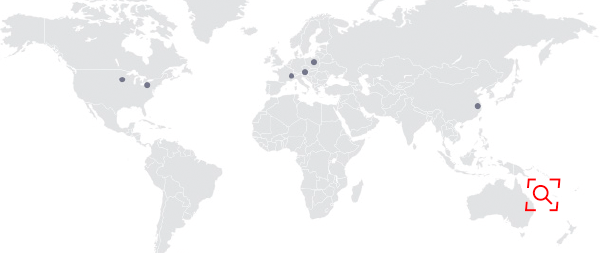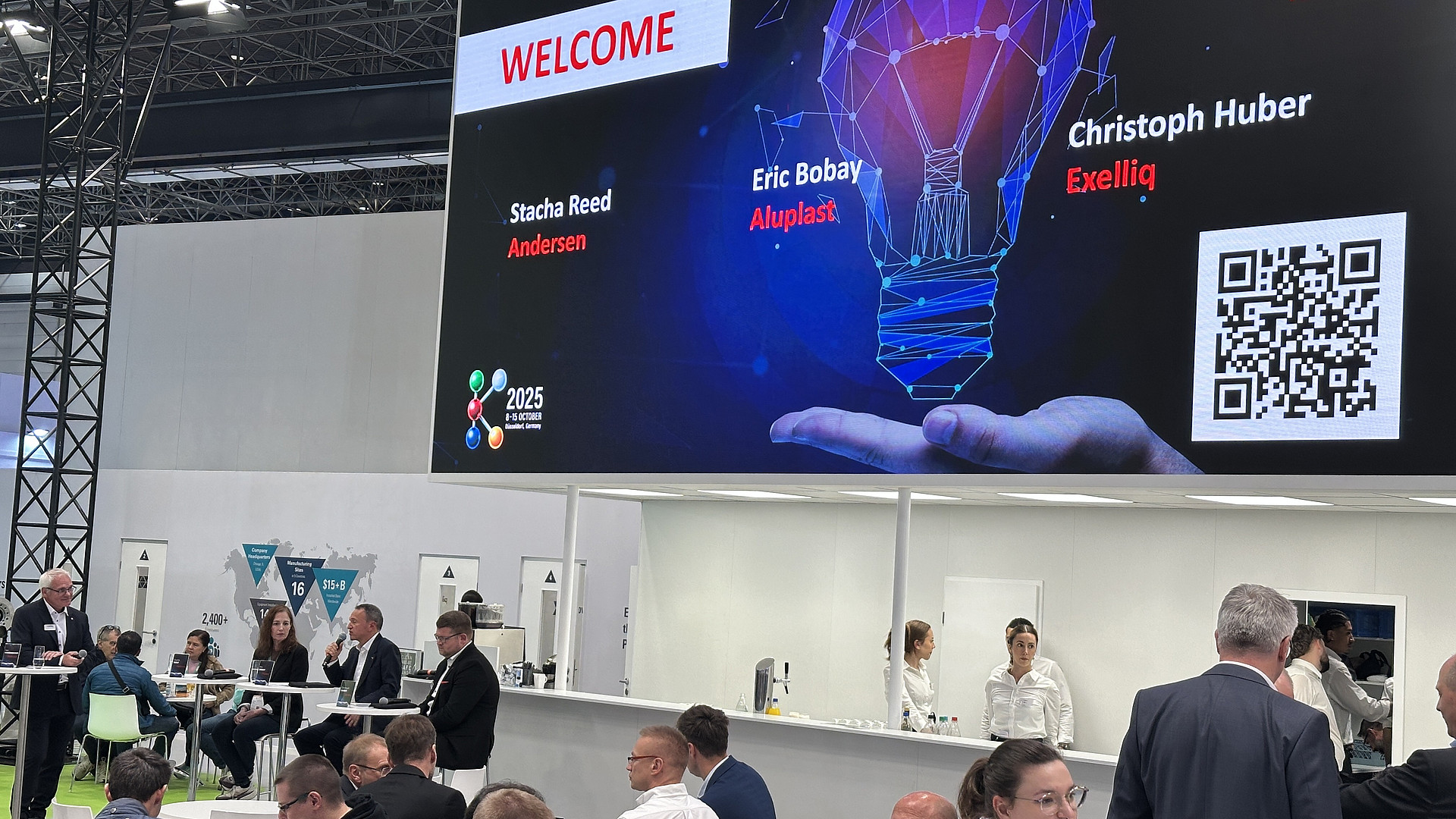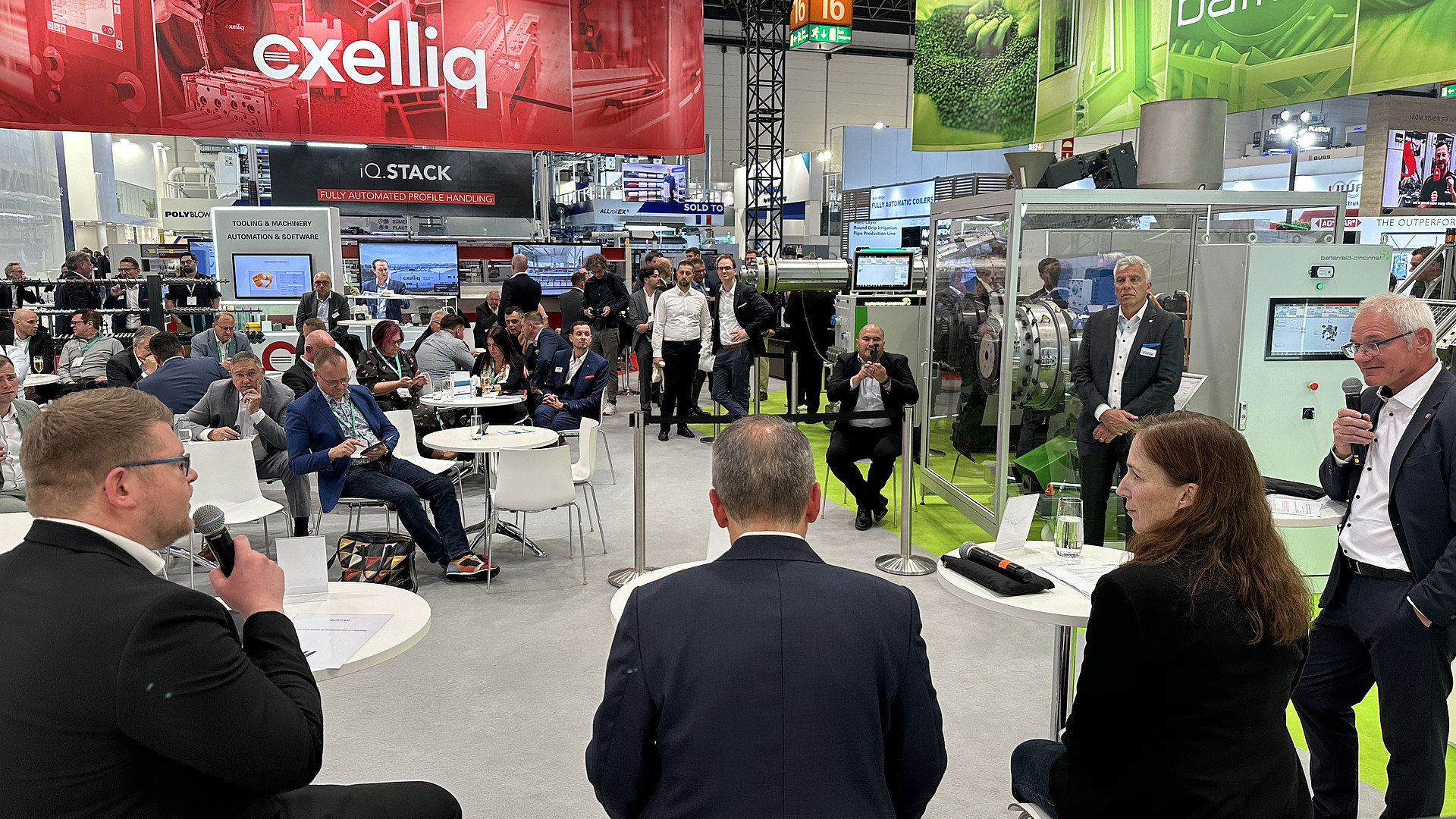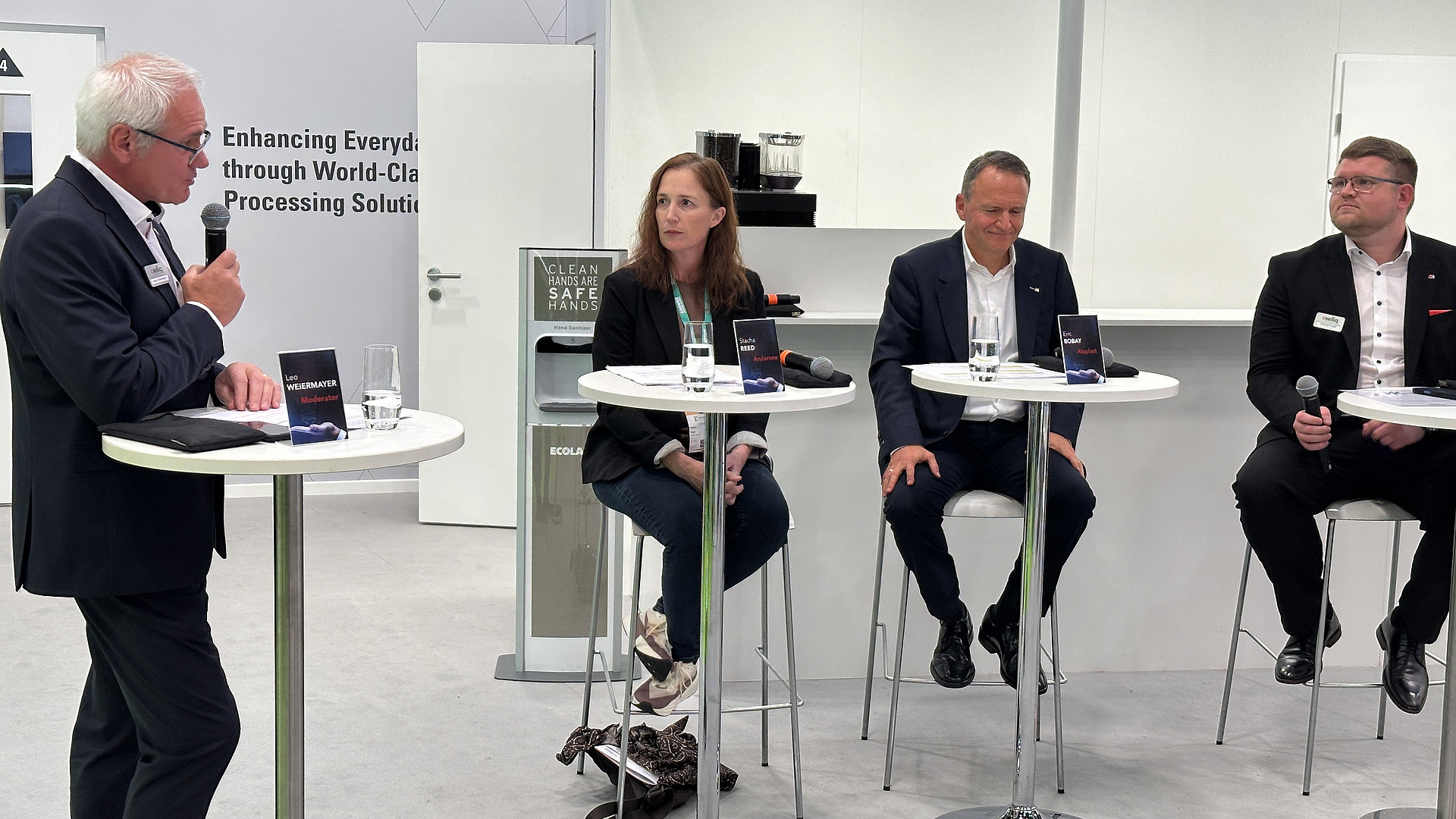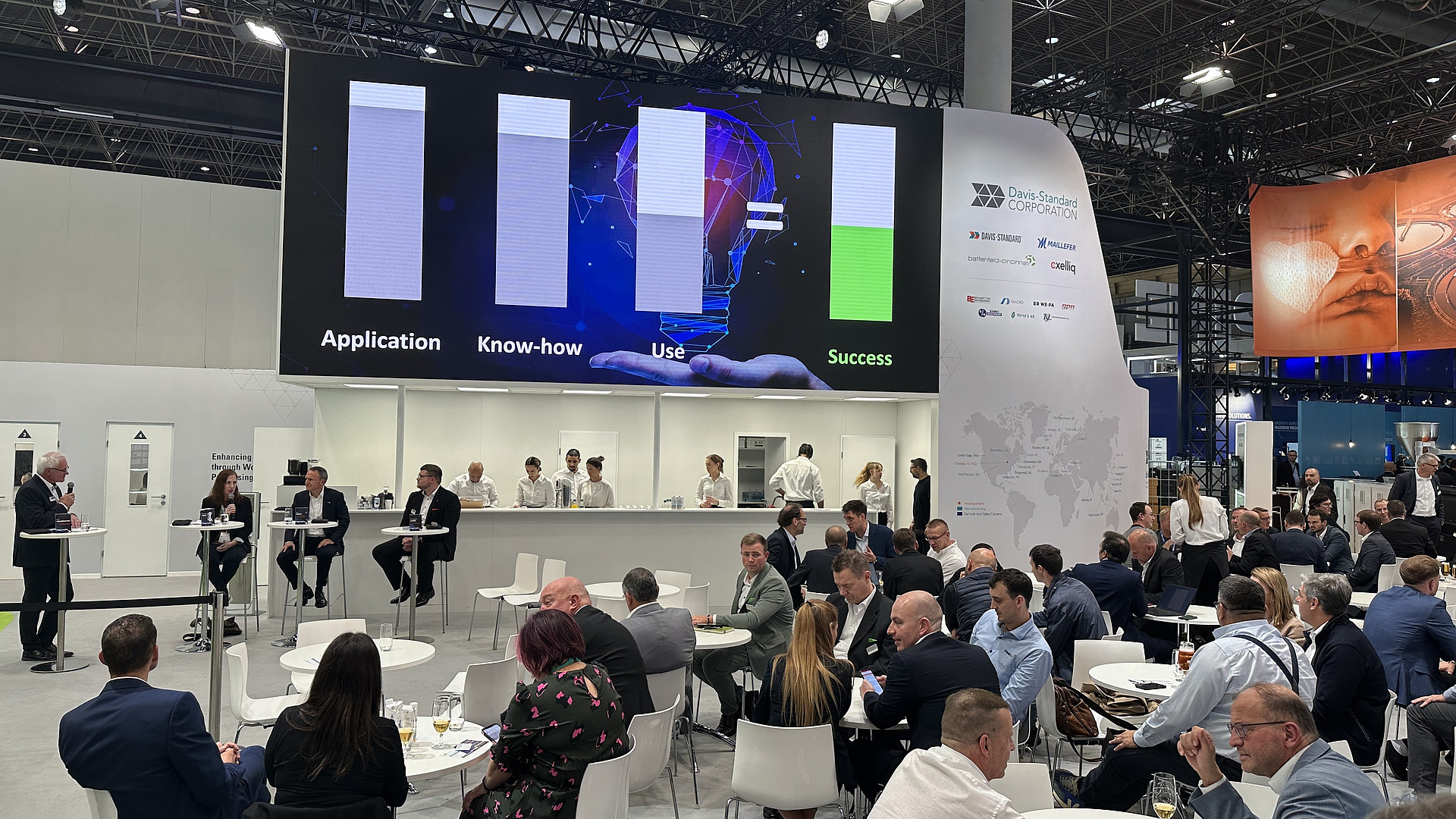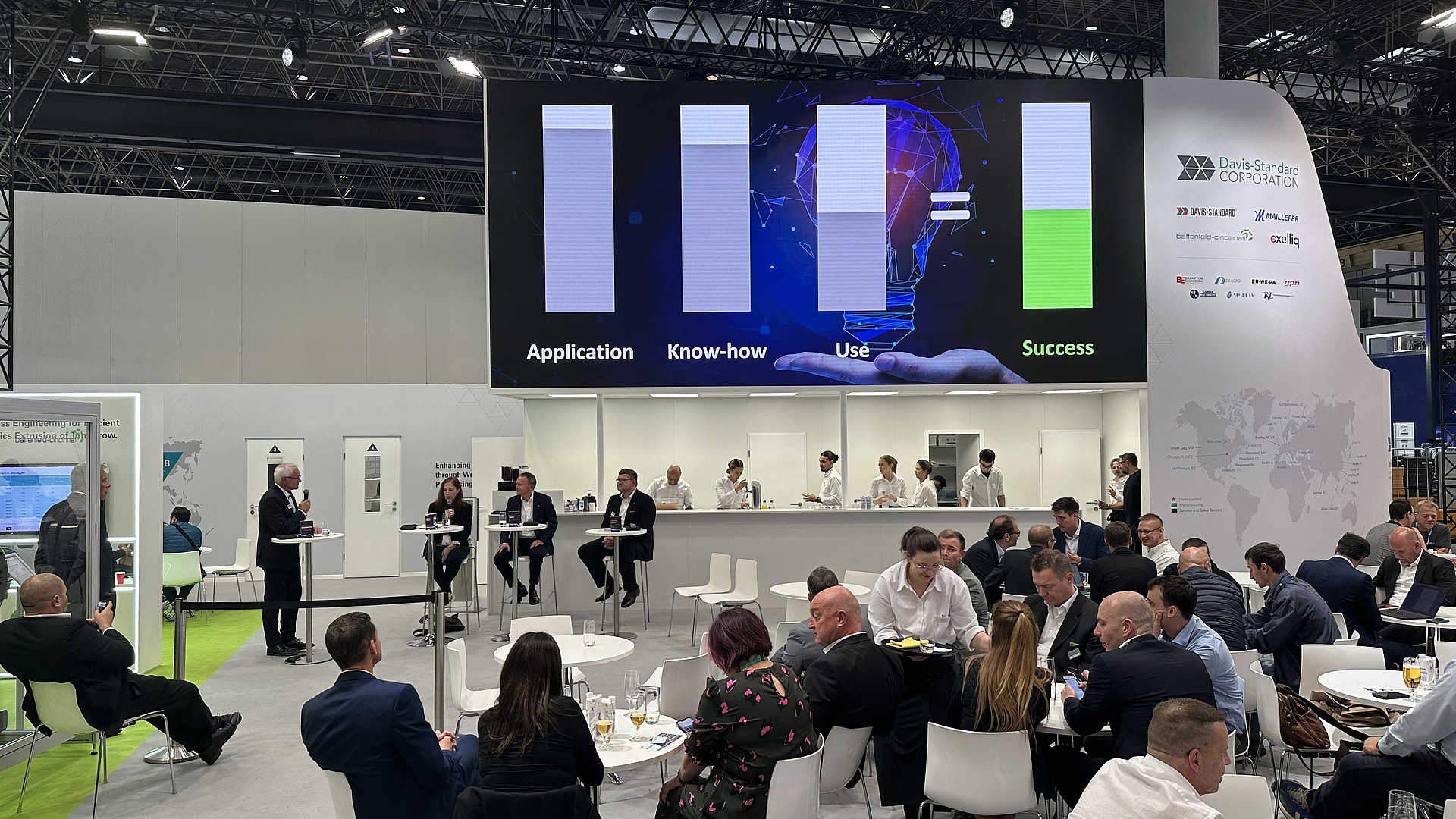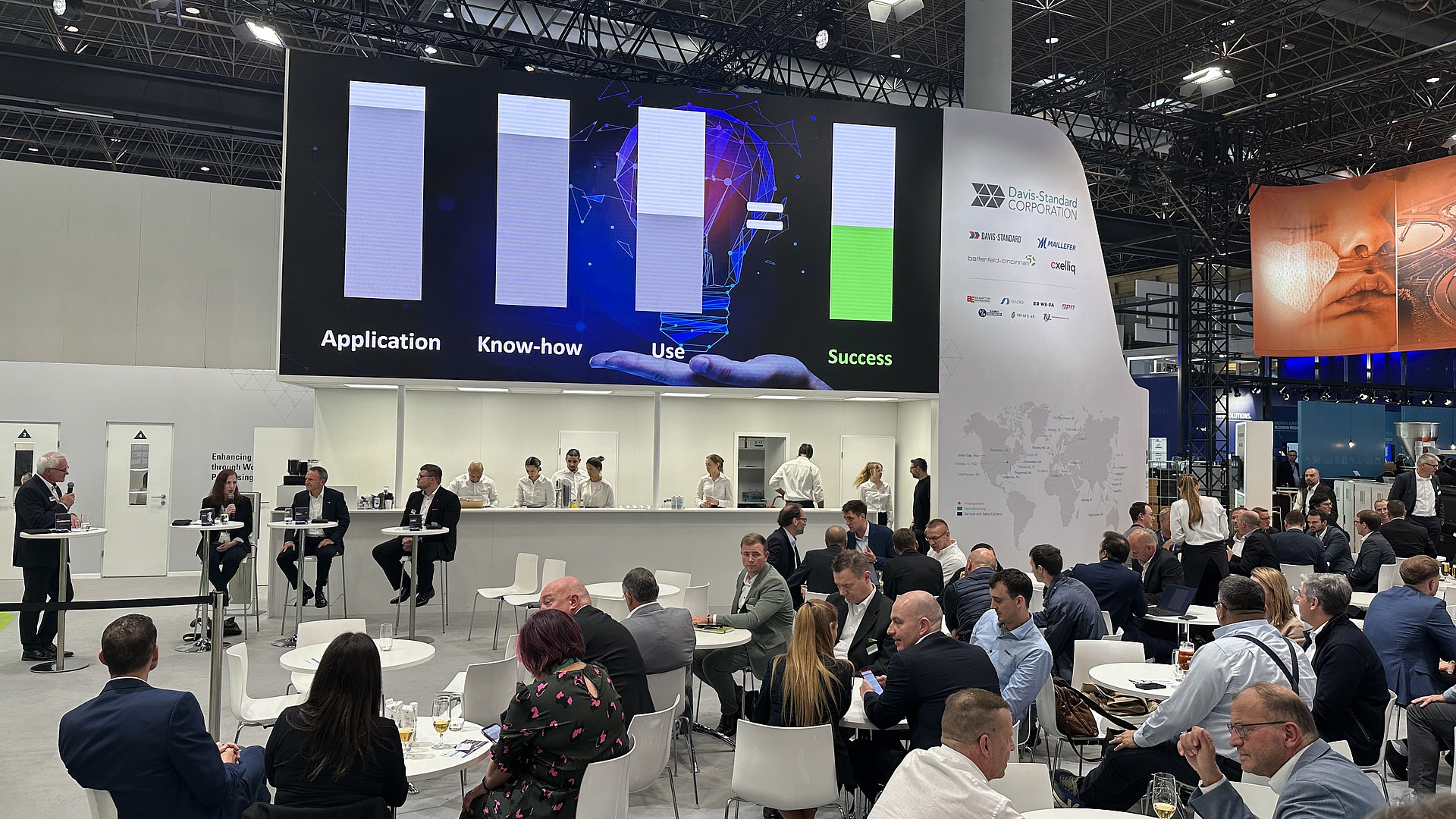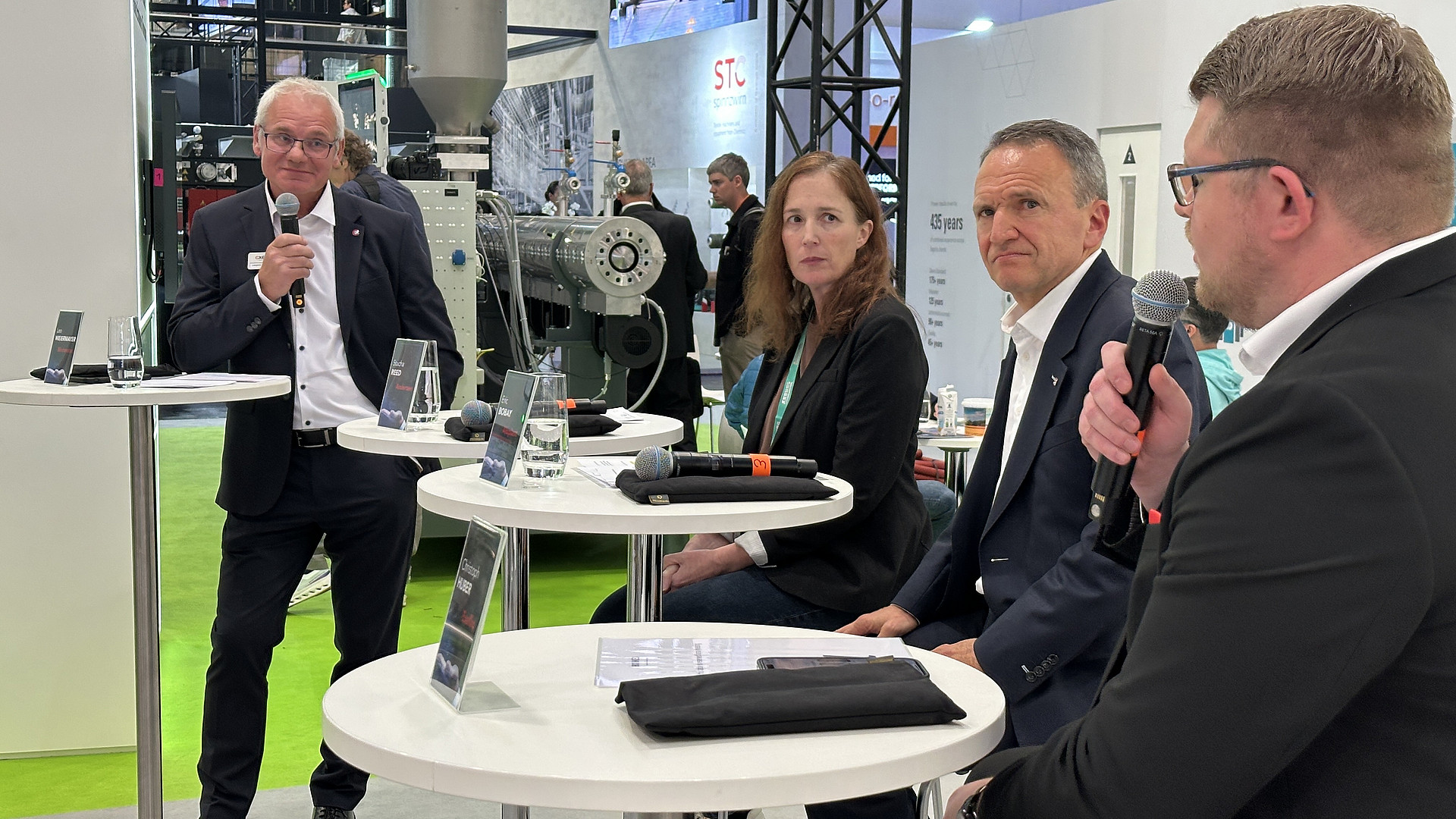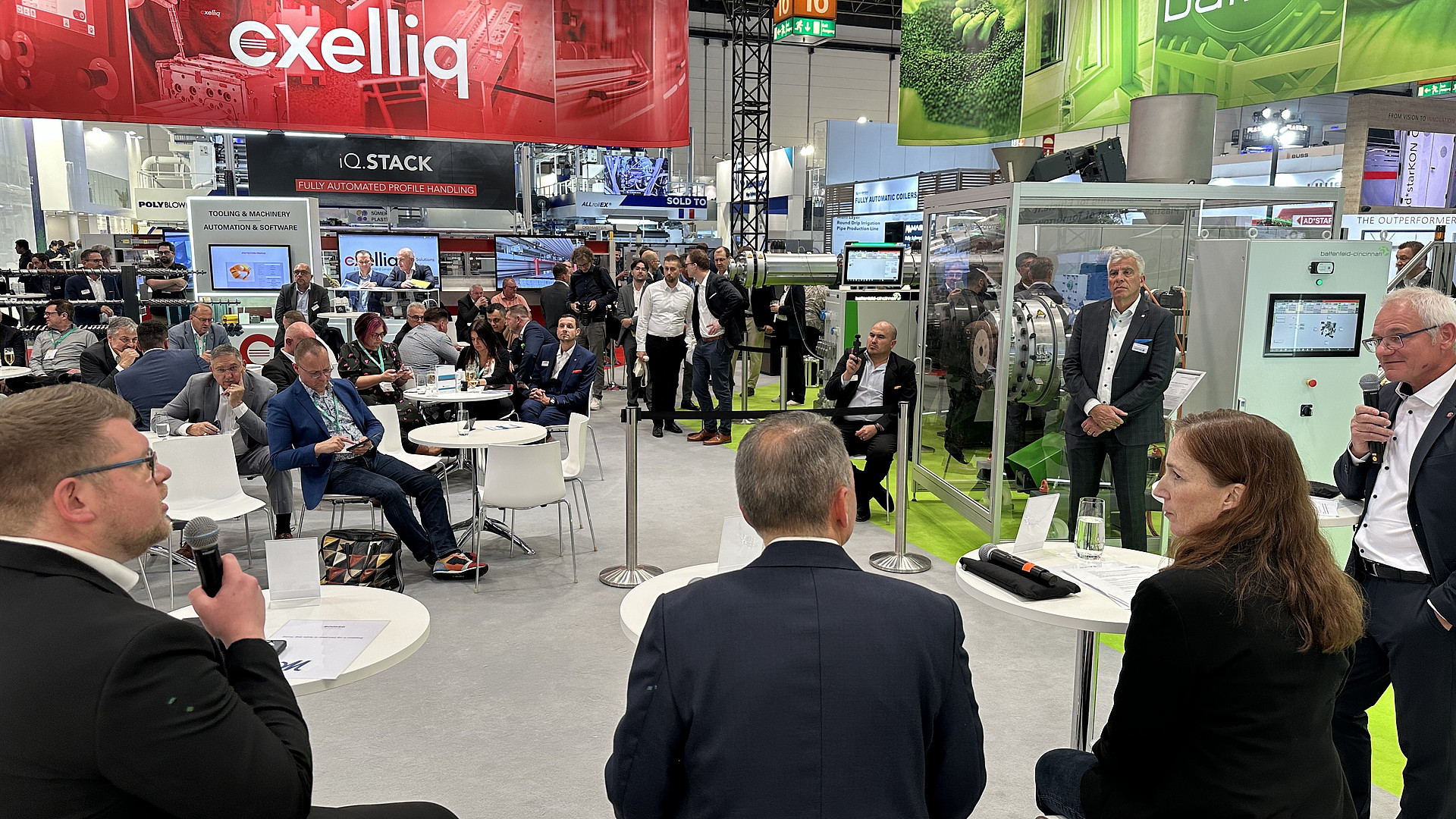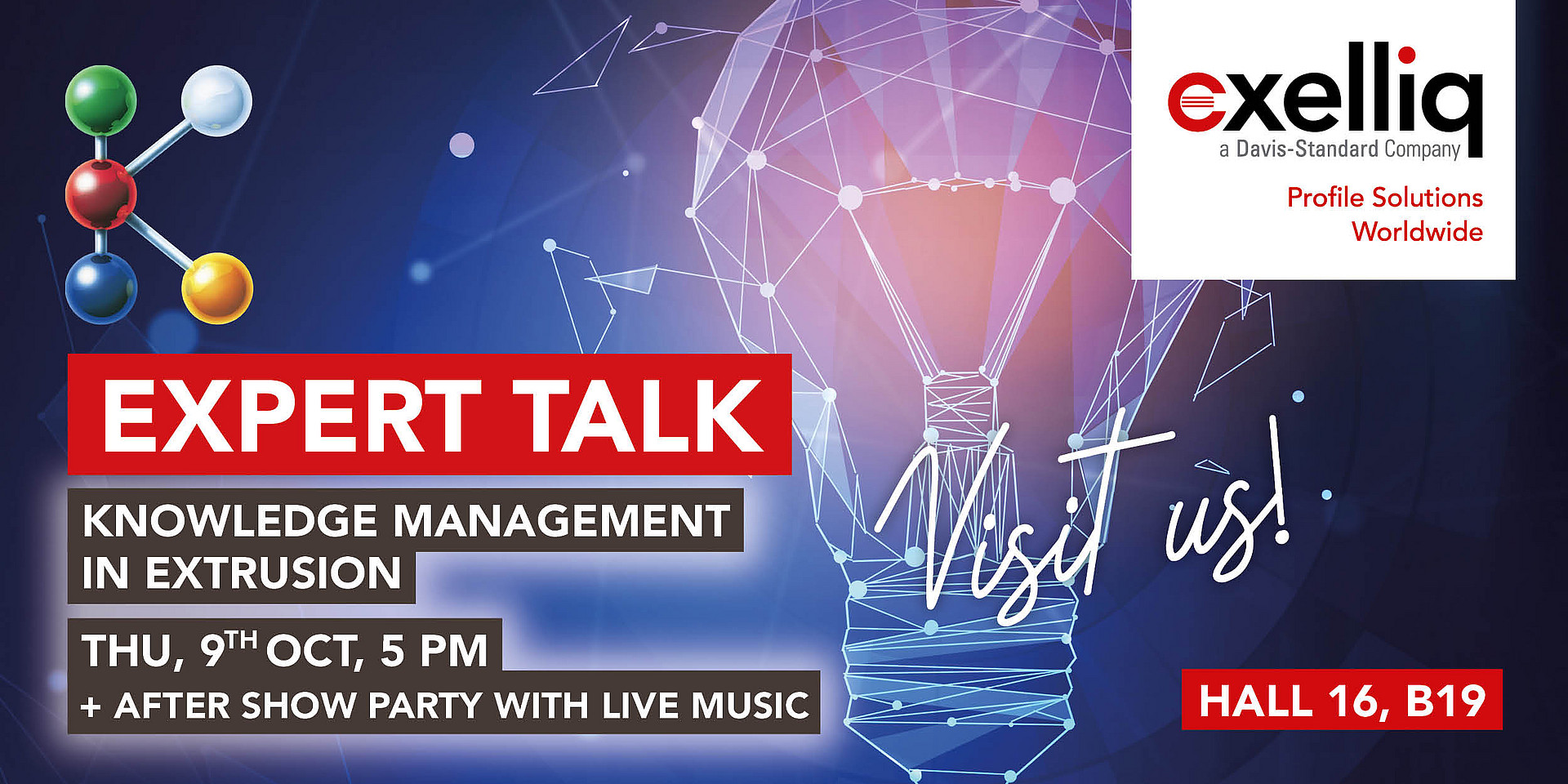
Exelliq’s Expert Talk at K Show underscores the urgent need for knowledge management in extrusion: AI augments, it doesn’t replace
Hosted by Exelliq on the joint Davis-Standard booth at K show, an expert panel from Andersen Corporation, Aluplast and Exelliq shared pragmatic strategies to capture and apply critical process know-how before it is lost, introducing a practical three-factor framework and a future-ready, AI-enabled approach.
When a company’s most experienced extrusion operator retires, what disappears with them? That question framed Exelliq’s Expert Talk at K, where industry leaders explored hidden operational risks and concrete ways to retain and operationalize tacit, undocumented expertise.
Moderated by Leo Weiermayer of Exelliq, the discussion brought together:
• Stacha Reed, Senior Director of Engineered Materials Technology at Andersen Corporation (USA), with responsibility across extrusion, compounding, blending, milling and coating operations
• Eric Bobay, CEO of Aluplast, a global innovator in window and door systems
• Christoph Huber, software developer at Exelliq, representing the digital and AI perspective
Why knowledge management is now mission-critical All panelists emphasized the urgency: senior operators are retiring worldwide, production roles are harder to fill, and essential process knowledge is typically held in people’s heads, not systems. “We have a highly senior workforce,” said Stacha Reed. “If we don’t find a way to manage this knowledge as our experienced employees turn over, we will face significant challenges.” Paper binders and ad-hoc handovers no longer suffice; younger generations expect intuitive, digital, always-updated access.
A practical three-factor framework for success
Christoph Huber distilled Exelliq’s implementation experience into three factors that must be strong in parallel:
1. Attractive, intuitive software that operators can and want to use
2. Up-to-date, validated know-how captured in structured, practical formats
3. Consistent, everyday use on the shop floor, tied to measurable results
“The best application with current information provides no value if it isn’t used,” Huber noted. “Equally, if the software is clunky or the content is outdated, adoption will stall.” Reed added that multi-format content—video, photos and clear, simple instructions—lowers barriers and reaches different learning styles. Bobay underscored the point: “We are not doing software only to transfer knowledge; we are doing it to improve efficiency, quality and profitability. KPIs must reflect that.”
Change management, culture and incentives
Panelists agreed that top-down sponsorship, clear roles and responsibilities, operator involvement from day one, and simple feedback loops are essential. Early wins matter: start with the biggest recurring line problems, prove value fast, and build momentum.
Practical measures include:
• Designing content in shop-floor language, not IT jargon
• Assigning owners to curate and maintain the knowledge base
• Tracking usage and impact with KPIs and shift-leader oversight
• Recognizing and rewarding contributions to the knowledge base to sustain engagement
Global realities require local nuance, noted Bobay: “Transfer is not the same for everybody. We need person-oriented education and we must adapt to the culture in each country.”
AI: powerful accelerator, not a cure-all
The panel was clear: AI enhances access and decision support, but it cannot conjure tacit expertise out of thin air. Foundational, structured process knowledge must be captured first. “AI is a tool to make knowledge flexible and accessible,” said Reed. “But we must start from stable, capable processes and validated content, then let AI grow its role.” Huber outlined Exelliq’s fourstep interaction model for the future: Gather (structured capture), Click (intuitive navigation), Chat (AI chatbot to surface specific insights) and Talk (voice-assisted problem solving with a virtual assistant). Each step builds on a high-quality knowledge base.
How to start—and keep going
To avoid overplanning and under-delivering, the panel recommended formal, cross-functional projects with IT alignment, budget, training support and a clear end goal. Begin with the highestimpact issues operators face, make the system truly useful on day one, and iterate. “The first
steps should be successful,” said Bobay. “Sell the early wins, and adoption will follow.” Reid summed it up: “Identify the priority, make time and resources available, and most importantly— get started.”
Key takeaways
• Knowledge management is an essential risk-mitigation and performance lever in extrusion
• Success depends on three equally strong pillars: attractive software, up-to-date know-how and consistent use on the shop floor
• AI augments human expertise and access; it does not replace the need to capture tacit knowledge
• Top-down sponsorship, operator involvement, early wins, cultural adaptation, and KPIs are critical to implementation
Watch the short video preview: youtu.be/ciEefpfPKqo
Listen to the entire Expert Talk: www.youtube.com/watch
